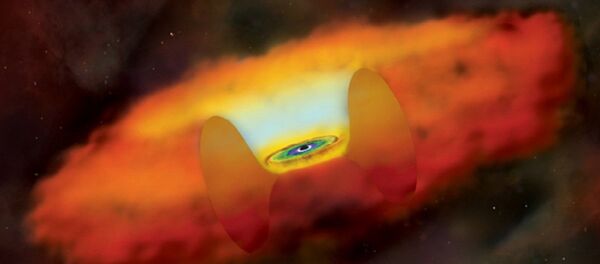Scientists said that the black holes fell into orbit about one another as a result of the merger between a pair of galaxies.
As for Mrk 231, it is located a safe 600 million light-years away from Earth.
Gravitational objects orbiting each other generate huge amounts of energy that makes quasars which lie at the core of their host galaxies, outshine the glow of their billions of stars.
Supermassive Binary Black Hole Found in Nearest Quasar http://t.co/wRgtd8CO2p #astronomy #space #science #Hubble pic.twitter.com/YlquOG25bC
— BreakingScienceNews (@scinewscom) 27 августа 2015
Youjun Lu of the National Astronomical Observatories of the Chinese Academy of Sciences underscored the importance of the discovery.
"We are extremely excited about this finding because it not only shows the existence of a close binary black hole in Mrk 231, but also paves a new way to systematically search binary black holes via the nature of the ultraviolet light they emit," he was quoted by NASA as saying.
According to forecasts of astronomers, it will be possible to observe these black holes, located in the active center of UGC 8058, merging into one within a few hundred thousand years.
As far as the duo's binary mass is concerned, it was estimated after scientists managed to make out anomalies in the ultraviolet radiation emitted by the black holes.



